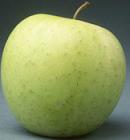ColinWright
Posts: 2604
Joined: 10/13/2005
Status: offline

|
quote:
ORIGINAL: Central Blue
one of the reasons I never finish a scenario is that I get distracted on figuring out things like how to create "accurate" squads or other items of equipment.
Let's say you accept that the water-cooled Vickers should be you gold standard for the AP value of 2. You could base your theory on cyclic rate of fire, but I think a better calculation is something like sustained rate of fire per minute. The M3 grease gun or Sten have interesting cyclic rates of fire, but it is hard to imagine anyone firing as many effective rounds per minute from a Sten as a water cooled weapon like the Vickers or M1917.
So you poke around on the internet and you find out that the Vickers could fire 10,000 rounds per hour, hour after hour. So you find out how much the typical slug weighs, push the numbers around till you have a formula that equals an AP of 2. Then you can begin to evaluate other weapons like the BAR and Bren. You can find FM's for the BAR that say sustained rate of fire is maybe 40-60 rounds per minute depending on training and model. And you can find lots of claims on the net that the Bren is good for 120 sustained rounds per minute, which is probably true if it really is operated by a team and they have spare barrels.
You can push the numbers around according to whatever data you can come up with, but all of a sudden, all of those Brens and 2" mortars in the carrier platoon begin to make some sense, because they actually add a significant weight of fire to the battalion.
And you can examine issues like the change in weight of the slug for M1917 because it was shooting too far for most interwar ranges in the US.
And it leaves all sorts of room for interesting arguments, because sustained rate of fire for the Garand isn't really that much higher than some claims made on behalf of the Springfield or Enfield. Someone writing a squad for a game with week long turns might decide to rate weapons differently than someone covering multiple turns per day.
BUt, in the specific case of figuring out a squad, fractional differences between individual weapons take on more meaning because they are being added together. That guy with the pistol carrying ammo or spare barrels and a pistol isn't adding anything to the weight of fire going down range/
What ever rate of fire numbers you choose, it gives you a way to compare a Series G Marine Corps Squad with 3 BAR's and 10 Garands to a German squad with one light MG43 and 4 to 6 guy running around with bolt action rifles while everyone else is catering to the needs of the MG43. A useful number if you are writing that scenario where the Marines storm Omaha Beach
There's reliability. Always a big factor. Aside from what happens if the damn thing actually does jam, it gives everyone that warm fuzzy feeling if they know the machine gun will work when they need it to.
There's also the consideration the Germans found convincing: that people will hide once you open fire on them with a machine gun, so an extremely high rate of fire was desirable. In other words, in a lot of situations, it doesn't matter how many bullets you're spitting out on second three or four: everyone's either hit or under cover.
Just as importantly, though, I think you have to look at how the automatic weapon was employed. The Germans, more so than other armies, tended to see the infantry squad as a support team for the machine gun. This probably made at least as big a difference as whether the piece fired five hundred rounds a minute, or nine hundred, or whether it could fire for three minutes or seven minutes without pause.
Generally, when it comes to weapons I think people overemphasize rate of fire, shell weight, range, etc. One has to look at such 'softer' data as reliability, ease of use, and the doctrine for that use. For example, if one looks at numbers for a vehicle such as the Pz III with the 37 mm gun, it's a rather unimpressive tank compared to the Somua. This overlooks factors like that nice roomy turret, and carefully-thought out crew positions, and reliability, and radios, and how the crew was taught to use their tank. Put all those together, and you realize you might really be better off in the Pz III than in the Somua. At any rate, not as worse off as it might first appear.
_____________________________
I am not Charlie Hebdo
|
 Printable Version
Printable Version













 New Messages
New Messages No New Messages
No New Messages Hot Topic w/ New Messages
Hot Topic w/ New Messages Hot Topic w/o New Messages
Hot Topic w/o New Messages Locked w/ New Messages
Locked w/ New Messages Locked w/o New Messages
Locked w/o New Messages Post New Thread
Post New Thread